The English Oak Bonsai scientifically known as Quercus robur, is a majestic native tree that captures the essence of mature woodland trees in a compact size. Its distinctive lobed leaves and charming autumnal acorns make it a truly iconic symbol of power, strength, ancient wisdom, and survival.
Appearance of English Oak Bonsai
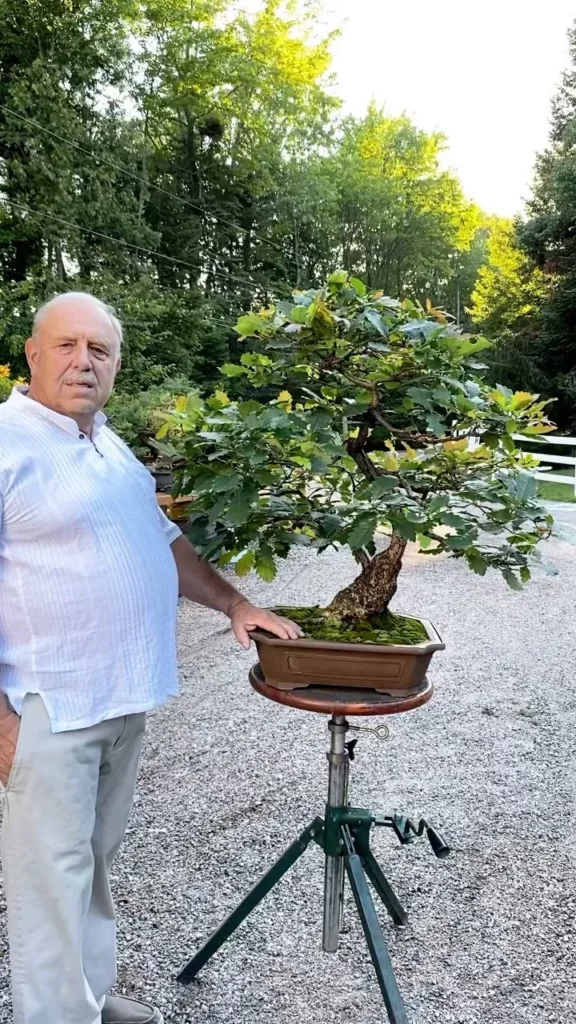
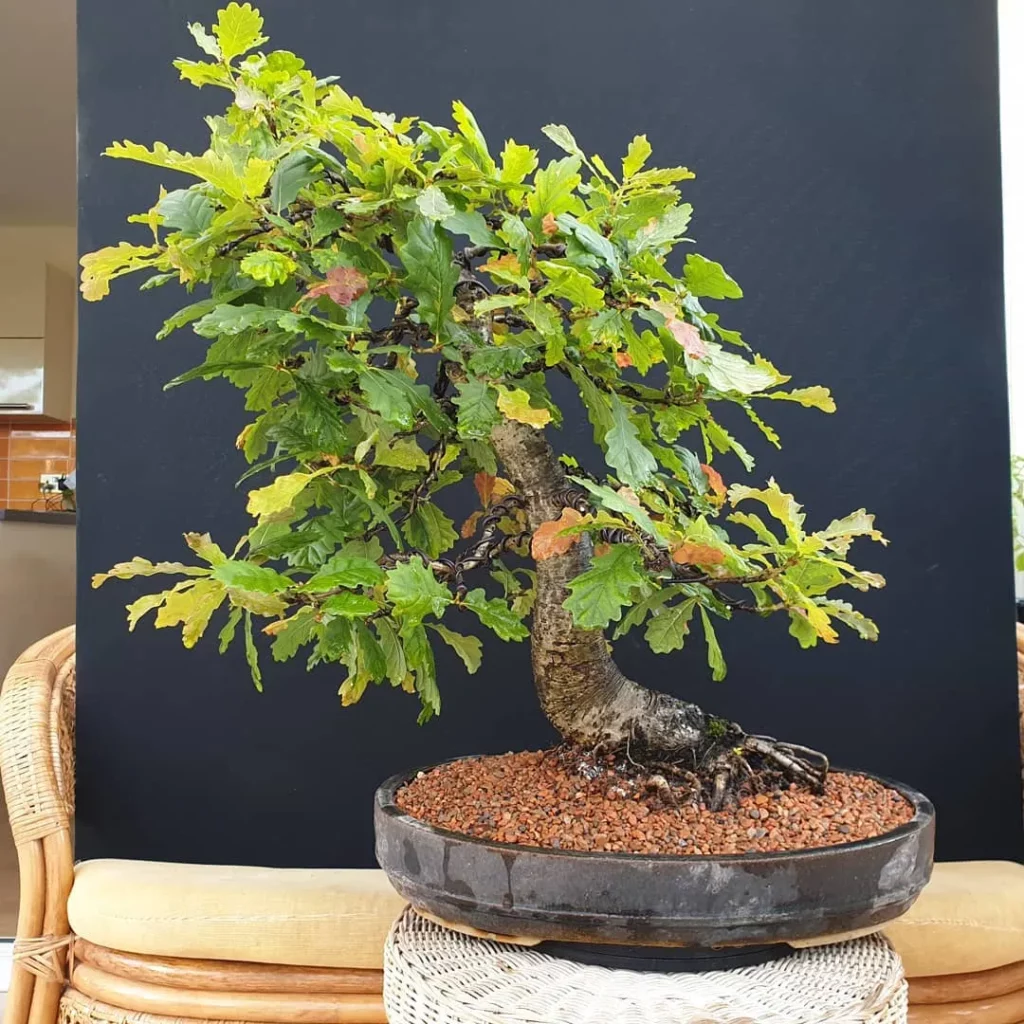
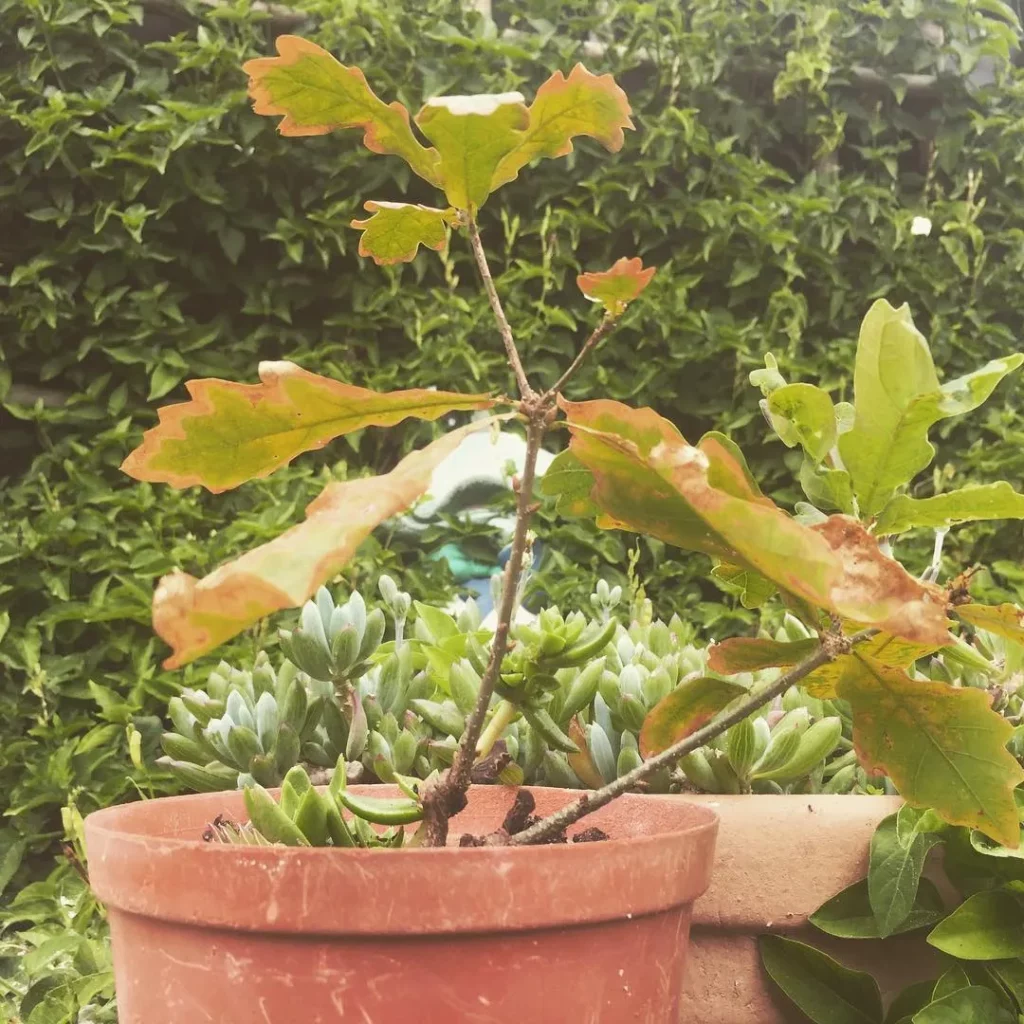
The English Oak Bonsai is a stunning miniature representation of its larger woodland counterpart. It boasts a powerful and commanding presence with a sturdy trunk that develops character and texture over time. The bonsai’s lobe-shaped leaves add to its unique charm, coming in a range of beautiful shades of green, from vibrant lime to deep green and even hints of red tones. As the bonsai matures, its leaves tend to become smaller, ranging from approximately 2.5cm (1″) to 5cm (2″) in size.
Light Requirements for English Oak Bonsai
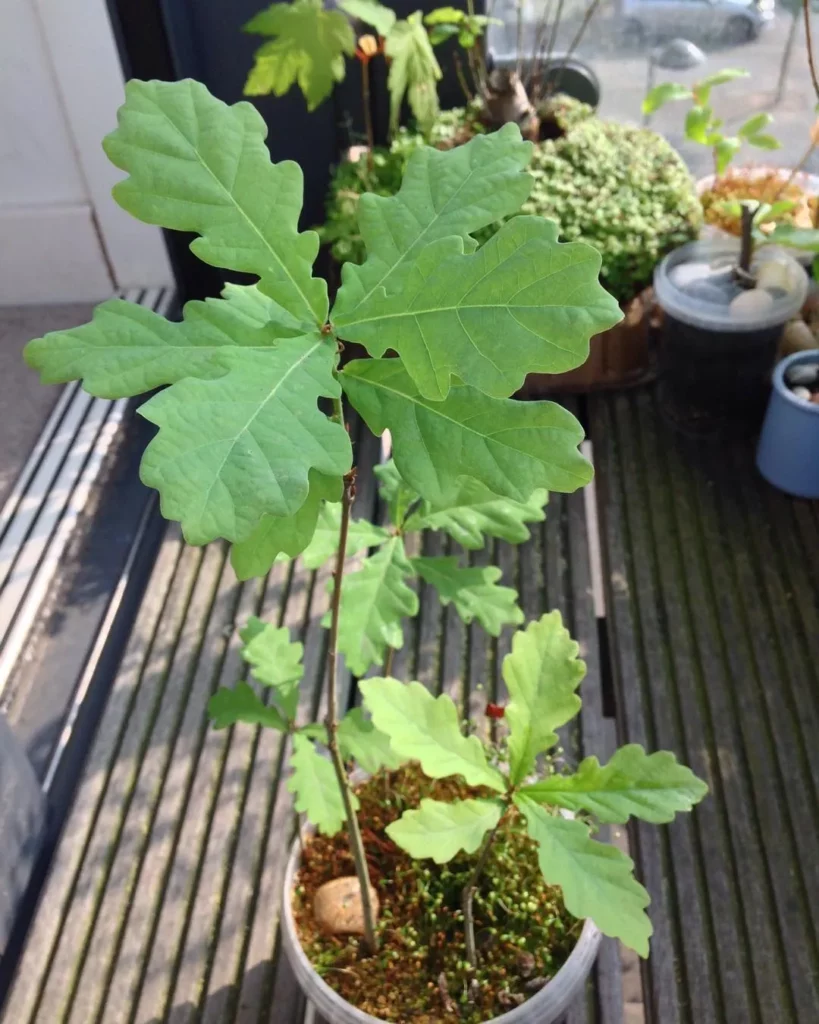
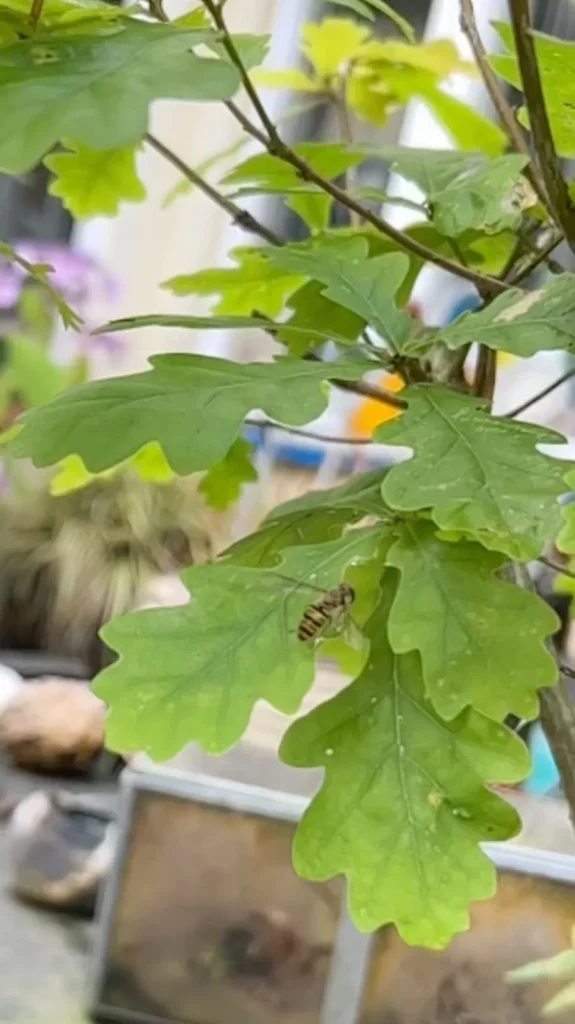
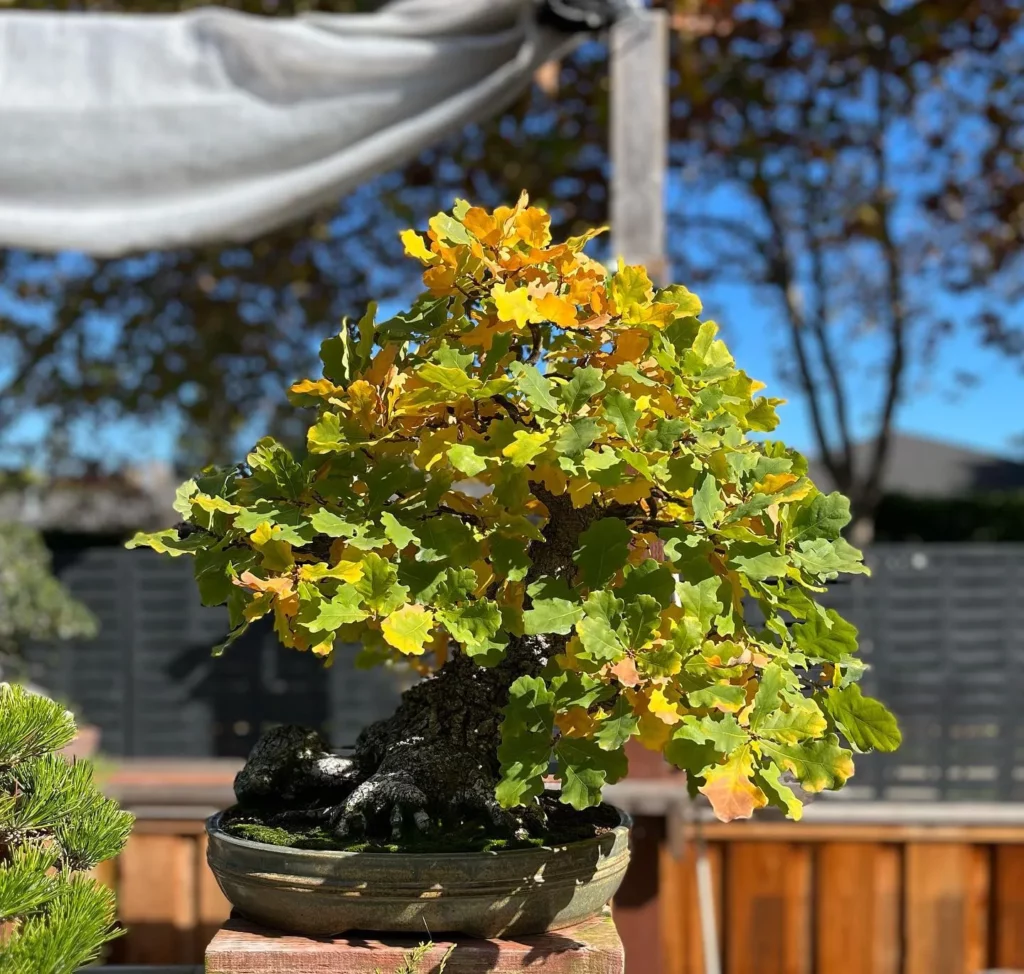
The English Oak Bonsai thrives in a bright and sunny location. It requires direct sunlight for a significant part of the day to ensure healthy growth. While it can tolerate some shade, a sheltered position with ample sunlight is preferable to prevent the bonsai from drying out too quickly.
When choosing a location for your English Oak Bonsai, look for a spot in your garden or patio that receives full sun exposure. Ensure that the bonsai is not shaded by tall buildings or trees that may block the sunlight. The more sunlight the bonsai receives, the better it will grow and develop.
If you live in an area with hot summers, it’s important to provide some shade during the hottest part of the day to protect the bonsai from scorching. You can use shade cloth or a patio umbrella to provide temporary shade during the midday sun.
During the winter months, when the days are shorter and sunlight is limited, it’s a good idea to supplement the natural light with artificial grow lights. LED or fluorescent lights that emit a spectrum similar to sunlight can help maintain the bonsai’s health and promote steady growth.
Watering English Oak Bonsai
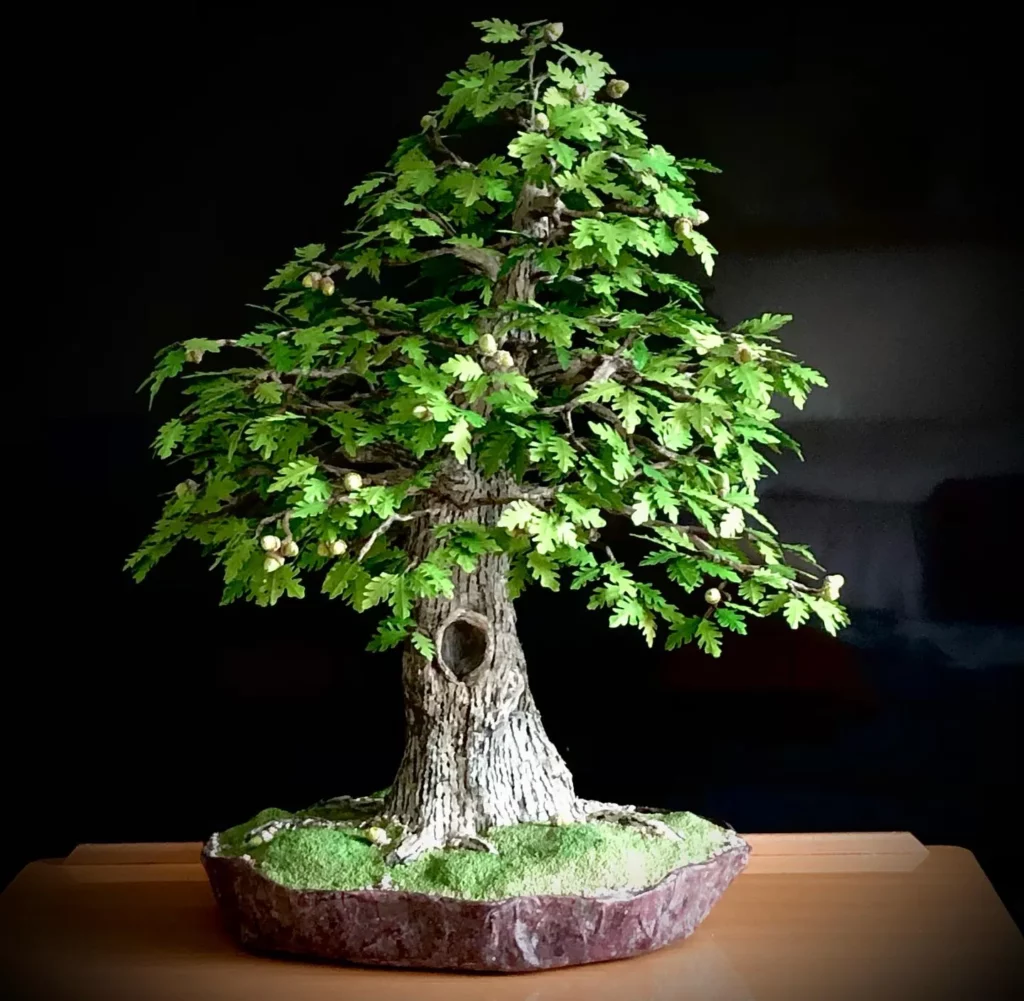
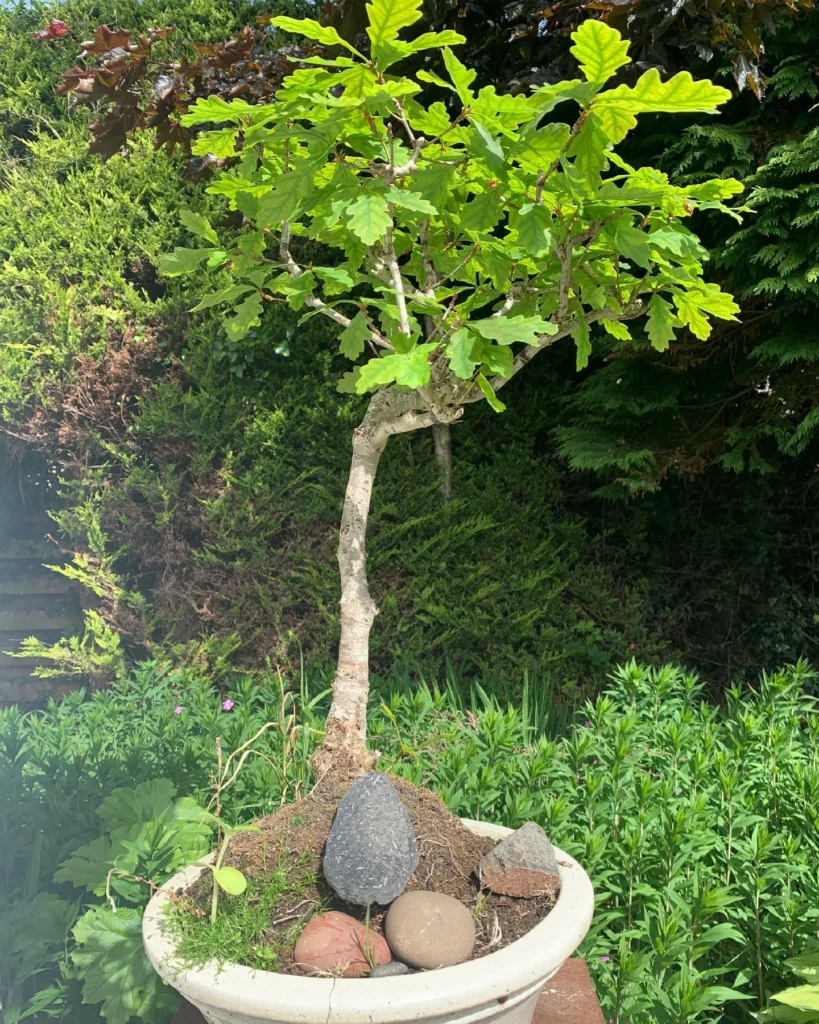
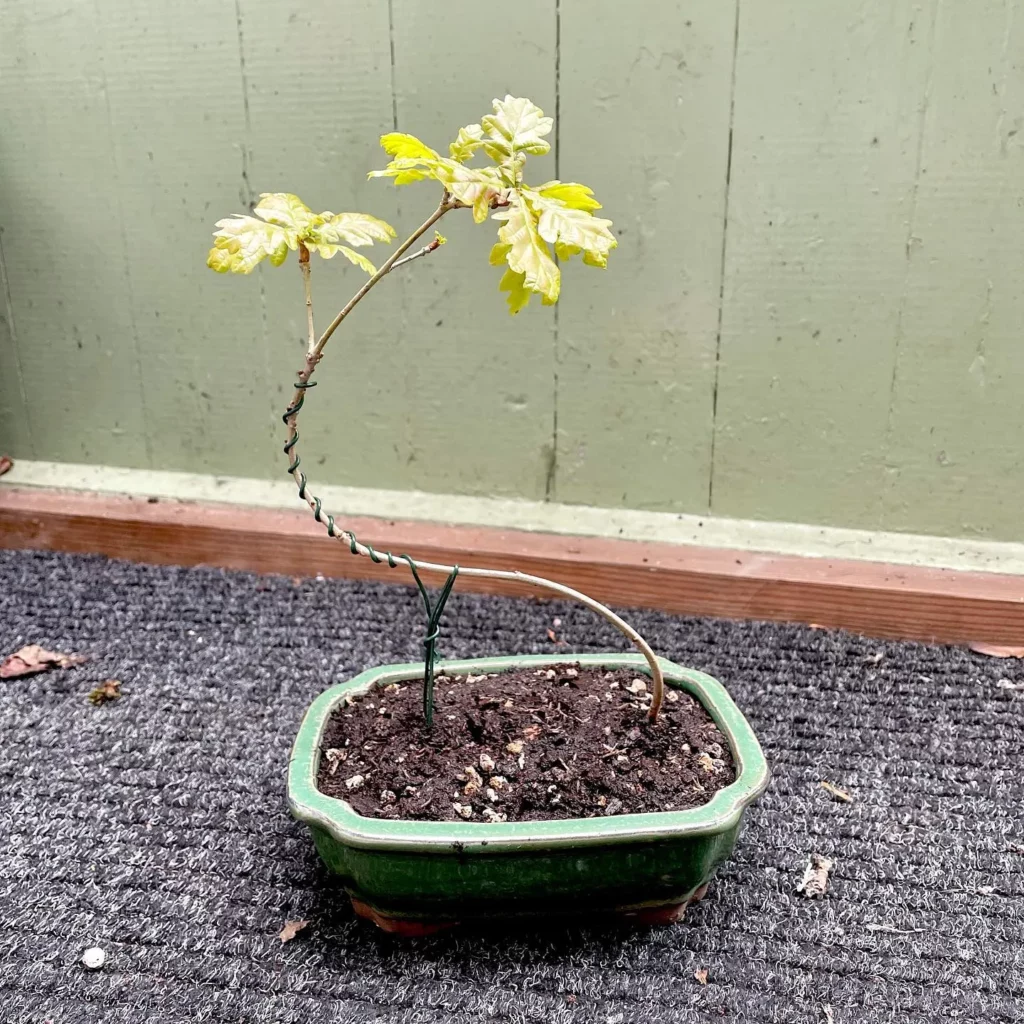
Watering is crucial when it comes to caring for your English Oak Bonsai. To ensure the health of your bonsai, it is important to check the moisture level of the soil daily. Water the bonsai when the soil feels damp, but make sure it is not overly wet. During hot weather, your bonsai may require more frequent watering to prevent the soil from drying out.
When watering your English Oak Bonsai, ensure thorough watering, allowing the water to drain through the drainage holes in the pot. This helps prevent overwatering and ensures that the soil doesn’t stay constantly wet, which can lead to root rot.
Fertilizing English Oak Bonsai
To keep your English Oak Bonsai strong and healthy, regular fertilizing is recommended. Using a good bonsai fertilizer, apply it weekly during the spring, summer, and early autumn seasons. Be sure to follow the instructions provided by the fertilizer manufacturer to ensure proper usage.
Fertilizing provides essential nutrients that promote growth and vitality in your bonsai tree. It helps replenish the nutrients that may get depleted over time in the bonsai soil. However, it is crucial to avoid overfertilizing, as this can harm the delicate roots of the bonsai.
When choosing a bonsai fertilizer, look for one specifically formulated for broadleaf trees like the English Oak Bonsai. These fertilizers typically have a balanced NPK ratio, which represents the ratio of nitrogen (N), phosphorus (P), and potassium (K). A balanced NPK ratio, such as 10-10-10 or 14-14-14, provides a good mix of essential nutrients for your bonsai.
During the growing season, when the tree is actively producing foliage and developing new shoots, it has higher nutrient requirements. Therefore, it is recommended to fertilize your English Oak Bonsai more frequently during this time. As the weather cools down and the tree enters its dormant phase, reduce the frequency of fertilizing to prevent excessive growth.
When applying the fertilizer, follow the instructions on the packaging for the appropriate dosage and method of application. You can either sprinkle the fertilizer granules on the soil surface or dissolve it in water and apply as a liquid feed. Ensure that the fertilizer is evenly distributed and avoid any contact with the leaves or trunk of the bonsai.
In addition to regular fertilizing, it is essential to monitor the overall health of your English Oak Bonsai. Look out for any signs of nutrient deficiencies, such as yellowing or stunted growth. Adjust the fertilization schedule or consult a bonsai expert if you notice any issues.
Potting English Oak Bonsai
To ensure healthy growth, it is important to repot your English Oak Bonsai every 2-3 years. Start by using a well-draining bonsai soil mix that is specifically formulated for bonsai trees. This type of soil will provide the proper aeration and moisture control that the bonsai needs.
When repotting, make sure to prune the roots to maintain an appropriate size for the bonsai pot. This will help stimulate new root growth and prevent the roots from becoming too crowded. Trim any long or circling roots to encourage a more compact and healthy root system.
Choose a pot that allows sufficient space for the roots to spread and grow. It should be slightly larger than the previous pot, but not too big as it can hinder the bonsai’s growth. The pot should have drainage holes to prevent waterlogging and ensure proper water drainage.
Repotting is best done during early spring, before the buds start to swell. This allows the bonsai to recover and establish its roots in the new pot before the growing season begins. Be gentle when handling the bonsai during the repotting process to avoid damaging the delicate branches and leaves.
Propagation of English Oak Bonsai
The English Oak Bonsai offers several methods of propagation to create new bonsai trees. These methods include seed germination, air layering, and hardwood cuttings.
Seed Germination
Propagating English Oak Bonsai from seeds requires patience and time. The process can take several years for the seedlings to develop into mature bonsai trees. To start, collect fresh acorns in the autumn and plant them in a well-draining soil mix. Keep the soil consistently damp, and place the pot in a sheltered outdoor location. Over time, the acorns will germinate and grow into young bonsai trees.
Air Layering
Air layering is another propagation method for English Oak Bonsai. This technique involves rooting a branch while it is still attached to the parent tree. Select a healthy and vigorous branch and remove a ring of bark, making sure not to wound the underlying wood. Apply rooting hormone to the exposed area and wrap it with moist sphagnum moss. Cover the moss with plastic wrap and secure it in place. As the branch develops roots, it can be cut off from the parent tree and planted as a new bonsai tree.
Hardwood Cuttings
Creating English Oak Bonsai through hardwood cuttings is possible during the dormant season. Select pencil-thick hardwood branches and cut them into 10-15cm (4-6″) sections. Dip the cut ends in rooting hormone and plant them in a well-draining soil mix. Place the cuttings in a sheltered outdoor location and keep the soil consistently moist. With proper care and attention, the cuttings will develop roots and grow into new bonsai trees.
Growth and Development of English Oak Bonsai
The growth and development of an English Oak Bonsai depend on various factors such as light, water, fertilization, and care. By providing the right conditions and proper maintenance, you can help your English Oak Bonsai thrive and achieve a mature and visually appealing appearance.
Regular pruning and shaping are essential for maintaining the desired form of your English Oak Bonsai. It helps promote healthy growth, strengthens the trunk, and encourages the development of well-balanced branches. Pruning also allows you to remove any diseased, damaged, or unwanted growth, ensuring the overall health of your bonsai tree.
Proper fertilization is important for the growth and vitality of your English Oak Bonsai. Choose a high-quality bonsai fertilizer and follow the manufacturer’s instructions regarding application rates and timing. Regular fertilization during the active growing seasons, such as spring, summer, and early autumn, will provide the necessary nutrients for your bonsai to flourish.
Light is another critical factor for the growth and development of your English Oak Bonsai. Place it in a bright and sunny location where it can receive direct sunlight for a significant part of the day. While the bonsai can tolerate some shade, providing ample sunlight will ensure healthy growth and prevent it from becoming leggy or weak.
Watering plays a crucial role in the growth and development of your English Oak Bonsai. Check the soil moisture daily and water when the top inch of the soil feels slightly damp. Avoid overwatering or letting the soil stay constantly wet, as this can lead to root rot. Consistent and proper watering will help maintain the bonsai’s hydration levels and overall health.
Pests and Diseases of English Oak Bonsai
Like any other plant, the English Oak Bonsai can be susceptible to pests and diseases. It’s important to be aware of these potential issues and take proactive measures to prevent and control them.
Common pests that can affect your English Oak Bonsai include aphids, scale insects, and mealybugs. These tiny creatures can feed on the sap of the bonsai, weakening its overall health. To eliminate them, you can use insecticidal soap or horticultural oil. Simply apply them according to the instructions on the product label, making sure to thoroughly cover the affected areas. Regular inspections of your bonsai can help you identify these pests early on, allowing for timely intervention and preventing further damage.
In addition to pests, diseases can also pose a threat to your English Oak Bonsai. Powdery mildew is a common fungal infection that appears as a white, powdery coating on the leaves. It thrives in humid conditions and can be controlled by improving air circulation around the bonsai and using a fungicidal spray. Another common issue is root rot, which is caused by overwatering or poor drainage. To avoid this, make sure your bonsai is potted in well-draining soil and water it only when the top inch of soil feels dry. Regularly inspect the roots for any signs of decay, such as a foul odor or mushy texture.
FAQ
What is an English Oak Bonsai?
The English Oak Bonsai is a majestic native tree, scientifically known as Quercus robur, that can be cultivated as a bonsai. It features distinctive lobed leaves and pretty autumnal acorns, making it an iconic representation of mature woodland trees. The Oak symbolizes power, strength, ancient wisdom, and survival. It is easy to care for and extremely hardy, making it a great choice for bonsai enthusiasts of all skill levels.
What does an English Oak Bonsai look like?
The English Oak Bonsai displays a powerful and commanding sturdy trunk, with character and texture that develop over time. The leaves of the bonsai are lobe-shaped and come in various shades of green, from lime to deep green to red tones. The older bonsai specimens tend to have smaller leaf sizes, ranging from 2.5cm (1″) to 5cm (2″).
Where should I place my English Oak Bonsai?
The English Oak Bonsai thrives in a bright and sunny location. It requires direct sunlight for a significant part of the day to ensure healthy growth. While it can tolerate some shade, a sheltered position with ample sunlight is preferable to prevent the bonsai from drying out too quickly.
How often should I water my English Oak Bonsai?
Watering is the most critical aspect of caring for an English Oak Bonsai. It is essential to check the soil moisture level daily, watering it when the soil feels damp but not overly wet. During hot weather, the bonsai may require more frequent watering to prevent the soil from becoming dry. Ensure thorough watering, allowing water to drain through the drainage holes in the pot. Avoid overwatering or letting the soil stay constantly wet.
How should I fertilize my English Oak Bonsai?
To keep the English Oak Bonsai strong and healthy, regular fertilizing is recommended. Use a good bonsai fertilizer and apply it weekly during the spring, summer, and early autumn seasons. Follow the fertilizer manufacturer’s instructions and avoid overfertilizing, as it can damage the delicate roots of the bonsai.
When should I repot my English Oak Bonsai?
The English Oak Bonsai should be repotted every 2-3 years to ensure healthy growth. Use a well-draining bonsai soil mix, specifically formulated for bonsai trees. When repotting, prune the roots to maintain an appropriate size for the bonsai pot. Choose a pot that allows sufficient space for the roots to spread and grow. Repotting is best done during early spring before the buds start to swell.
How can I propagate an English Oak Bonsai?
The English Oak Bonsai can be propagated through various methods, including seed germination, air layering, and hardwood cuttings. Seed germination requires patience, as it can take several years for the seedlings to develop into bonsai trees. Air layering involves rooting a branch while it is still attached to the parent tree. Hardwood cuttings can be taken during the dormant season and require proper care and rooting hormone to ensure successful propagation.
How does an English Oak Bonsai grow and develop?
The growth and development of an English Oak Bonsai depend on various factors such as light, water, fertilization, and care. With proper attention and maintenance, the bonsai will develop a strong trunk and branches, achieving a mature and aesthetically pleasing appearance. Regular pruning and shaping will help maintain the desired form and promote healthy growth.
What pests and diseases can affect an English Oak Bonsai?
Like any other plant, the English Oak Bonsai can be susceptible to pests and diseases. Common pests include aphids, scale insects, and mealybugs, which can be controlled with insecticidal soap or horticultural oil. Diseases such as powdery mildew and root rot can occur due to improper watering or poor air circulation. Regular inspections and timely intervention can help prevent and address these issues.





